<--- Back to Details
| First Page | Document Content | |
|---|---|---|
 Date: 2004-12-21 01:09:51Discovery program Astrodynamics Spacecraft propulsion Astronautics Gravity assist Galileo Radioisotope thermoelectric generator NEAR Shoemaker Atmospheric entry Spaceflight Space technology Spacecraft |
Add to Reading List |
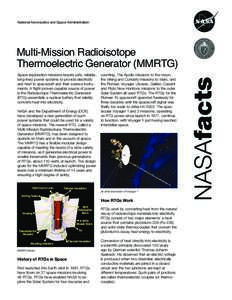 | National Aeronautics and Space Administration Multi-Mission Radioisotope Thermoelectric Generator (MMRTG) Space exploration missions require safe, reliable, long-lived power systems to provide electricityDocID: 1srjf - View Document |
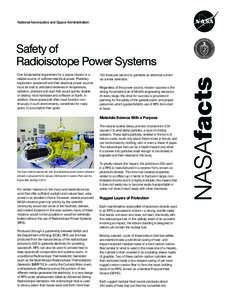 | National Aeronautics and Space Administration Safety of Radioisotope Power Systems One fundamental requirement for a space mission is a reliable source of sufficient electrical power. PlanetaryDocID: 1rgAe - View Document |
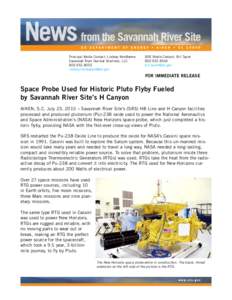 | Principal Media Contact: Lindsey MonBarren Savannah River Nuclear Solutions, LLCDOE Media Contact: Bill TaylorDocID: 1qksH - View Document |
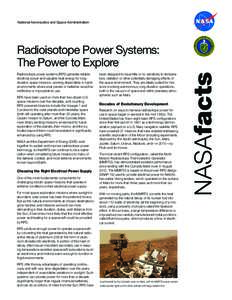 | NEW OFFICIAL DOE SEAL COLORDocID: 1pFSB - View Document |
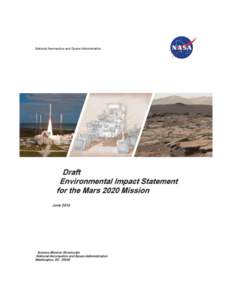 | Draft Environmental Impact Statement for the Mars 2020 MissionDocID: 1oZZC - View Document |
 APPENDIX B PROBABILITIES AND SOURCE TERM METHODOLOGY FOR INADVERTENT REENTRY DURING AN EARTH SWINGBY AND INTERPLANETARY CRUISE FOR THE VVEJGA AND VEEGA TRAJECTORIES
APPENDIX B PROBABILITIES AND SOURCE TERM METHODOLOGY FOR INADVERTENT REENTRY DURING AN EARTH SWINGBY AND INTERPLANETARY CRUISE FOR THE VVEJGA AND VEEGA TRAJECTORIES